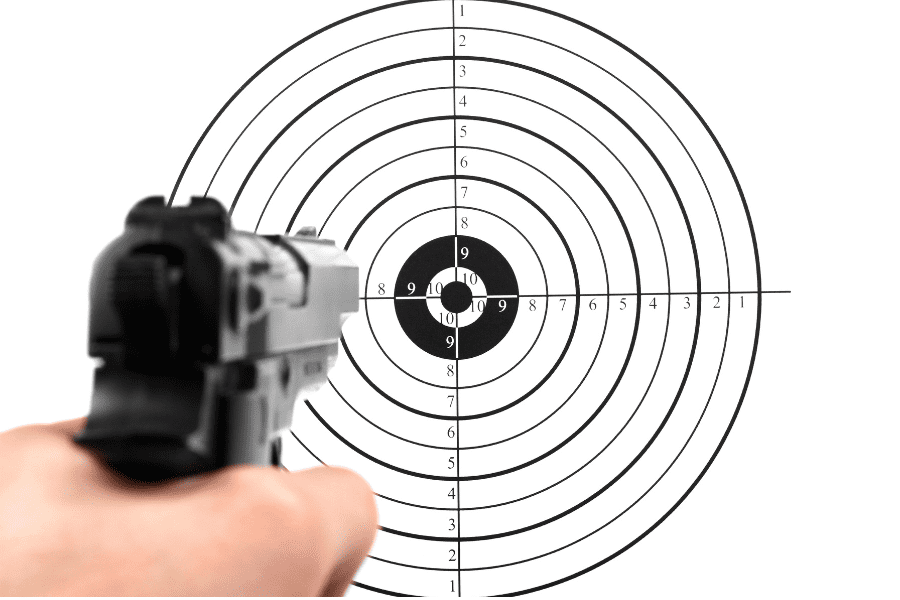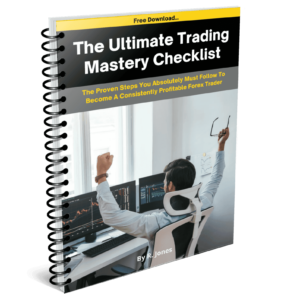Have you every wondered how the top pro traders manage to consistently make 6/7 and 8 figures profits year after year?
Well, one way is through following a system or if you like a process.
I have been looking at some brilliant articles by some of the best traders in the business and almost all of them have one thing in common.
A tried, trusted and proven system they religiously follow that makes them profitable.
From all my reading and studying over the last couple of years, the biggest takeaway by far is that all the great traders follow systems and processes to achieve the results they do.
Of course, systems and processes are useless if you don’t possess an iron-clad discipline to follow them, but nevertheless they are still very much at the heart of trading success.
I Can’t Pull The God Damn Trigger!!!
As a beginner, there’s probably nothing more frightening than ‘pulling the trigger’ on those first handful of live trades.
That fear of the trade going against you and losing money is totally natural and one of the most common but challenging emotions when starting off.
It can play havoc with your mind and its why trading psychology is the fundamental skill every trader must master.
However, and providing you have all your ducks aligned in terms of your trading plan, strategy, money management rules etc, do you think having a step-by-step list of rules to follow before entering every trade would be of help to you?
If so then please read on…
7 Pro Trader Entry Rules That You Should Follow Too…
1. Trade what you see, not what you want to see
Rather than predicting/speculating what you think could happen in the market, trade what’s happening right NOW!!
Unless you’re Nostradamus, forget trying to be a fortune teller.
If you’re following a particularly strategy or set-up, wait for it to be confirmed first before taking any further action on it.
2. Does the trade align with your plan?
Your trading plan is a system you’ve painstakingly created and back-tested that provides you with signal on whether to enter a trade or not.
If your plan consists only of trading breakouts, then trading breakouts is the only price patterns you should be looking out for.
Deviating to trade other set-ups that you’ve not thoroughly back-tested such as moving average crossovers, continuation trades, and reversal trades etc will eventually end in failure.
You may get lucky and have a couple of winners taking these different set-ups, but when one of these trade set-ups starts going against you’ll have no idea how to react.
So regardless of how good a trading opportunity appears to be if it doesn’t align with your trading plan, simply ignore it.
3. Know your Entry
Whatever set-up you trade within your trading plan you will always have a price level where you enter the trade.
Entries are central to any trading strategy and set-up and indicate the precise event of when to ‘pull the trigger’ and enter the trade.
If you don’t have a trade entry level, you should turn off your trading station immediately and return to revaluate your trading plan.
4. Know Your Stop Loss
This is one of the most important components of making a trading strategy/set-up robust.
Protecting your capital is and always will be your #1 objective and stop losses are crucial to you achieving this.
With every trade you take you must ALWAYS have a stop loss.
If you ignore this then you’re literally throwing everything out the window when it comes to risk management and your life as a trader will guaranteed to be short lived.
5. Have you position sized appropriately?
As well as stop losses, position sizing is the other key element within your risk management plan
Your trade position size should always be in line with your risk parameters.
Most successful traders work within the risk parameters of 1-3% of their trading capital for every trade.
And they never deviate from this!!!
You should and must do the same.
6. Know Your Profit Target.
Exiting the trade in profit is what every trader desires.
Having a profit target level where you exit the trade helps not only to protect your profits, but also it provides that security that ensures you don’t hold a position too long only to see it reverse and wipe out most or all your gains
A thoroughly back-tested trading plan will always incorporate the exact levels of where to exit trades
7. Are you in a good feeling place?
Before you look to enter any trade you should ALWAYS assess where are you in terms of your mindset at that given moment?
Ask yourself…
- “Am I feeling calm or am I particularly anxious, agitated or overly excited?”
- “Am I patient or am I restless and over eager?”
- “Am I mentally equipped to deal with losses today?”
These types of questions will reveal whether you’re experiencing any kinds of negative emotions.
If you are then it’s strongly advisable to take a day off, until such time you’ve cultivated a more positive mindset. Your trading capital will appreciate you for it.
One other important thing you must consider in terms of your mindset is after you’ve incurred a loss or a series of losses.
Are you slipping into the realms of ‘Revenge Trading’?
This can be a common problem for lots of traders who feel down or frustrated after a loss.
They want to jump straight back in and get some revenge on the market.
If you slip into this way of thinking, turn off your trading station and come back the following day.
Why Are These Pre-Trade Entry Questions Important?
Going through these question systematically like a step-by-step checklist I guess you can call it, can go a long way to help you improve your efficiency and consistency.
Checking them off one-by-one before you enter every trade, will ensure it’s accordance with your trading and risk management plans and therefore stacking the odds very much in your favour.
Adopting systematic processes and becoming more mechanical with your trading will help you become much more profitable and successful in the long term.
It’s what all successful traders follow and why they experience the success they do.
Try these questions for yourself when you next trade, or you may have some additional ones you’d like to add, if so I’d love to hear from you.


